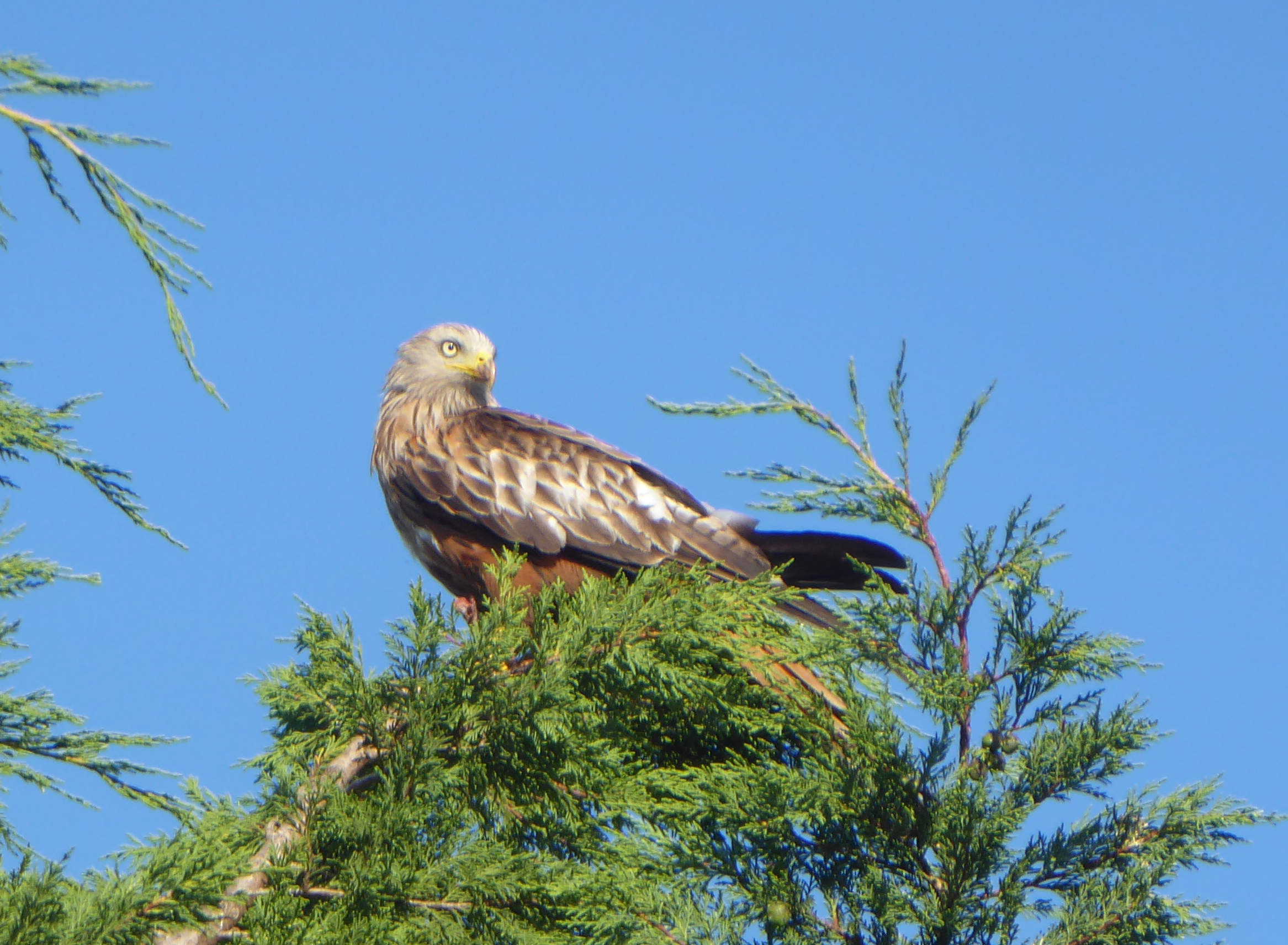Garden Wildlife
Garden Wildlife


What do they look like?
Red Kites are big birds averaging 63cm body length with a wingspan of 1.85m. Males weigh 1kg and are smaller than females which weigh .2kg. They have rusty red plumage and a pale head, but are unmistakeable in the air, with angled wings with prominent pale patches, and a deeply forked tail which they twist to steer their soaring flight.
What do they sound like?
Rather a high-pitched mewing sound “hi-hi-heeea”. This can get quite irritating if they persist in circling over your garden or adopt one of your trees.
Red Kite Milvus milvus
Originally birds of pasture and forest, red kites adapted well to humans and historically performed an important job of disposing of small dead animals and refuse in medieval and later cities. It was then decided they were vermin and exterminated from everywhere except the valleys of central Wales, where they hung on. They were successfully reintroduced in 1989 in the Chilterns and Scotland, and since then they have not looked back. They are not often recorded in gardens nationally, but if you have a garden in an area where they are breeding (as I do), you are almost certain to see them soaring and circling overhead and sitting calling at the top of tall trees.
.jpg)

What do they eat?
They are scavengers on dead birds and mammals but will tackle and kill some small prey. They are most commonly seen tucking in to road kill, which must have greatly helped their recent spread.
Where do they breed?
Nests are built of sticks and twigs high up in a tall tree, and often used in later years, building to a considerable size. They are fond of stealing bright objects (and washing from clothes lines) to line and embellish their nests. They have one brood per year, from March to August with up to 3 eggs.
What do they do?
Characteristically they soar individually, in pairs or small groups high in the sky looking out for food. They are often seen picking at road kill, and some people have attracted them to their gardens by putting out chicken and meat on tables.
How are they doing?
Red kites are rapidly expanding their range and numbers and are now breeding in most of Wales and in the southern and eastern midlands of England, with isolated populations in parts of Cumberland, Scotland and Ireland. There are estimated to be 4,400 pairs in Britain.
Finding out more:
BTO profile on red kite
RSPB profile on red kite
Hawk and Owl Trust profile on red kite
Page written and compiled by Steve Head
Irish Wildlife Sounds, XC657717. Accessible at www.xeno-canto.org/657717.
Red Kite Milvus milvus
Originally birds of pasture and forest, red kites adapted well to humans and historically performed an important job of disposing of small dead animals and refuse in medieval and later cities. It was then decided they were vermin and exterminated from everywhere except the valleys of central Wales, where they hung on. They were successfully reintroduced in 1989 in the Chilterns and Scotland, and since then they have not looked back. They are not often recorded in gardens nationally, but if you have a garden in an area where they are breeding (as I do), you are almost certain to see them soaring and circling overhead and sitting calling at the top of tall trees.

.jpg)
What do they look like?
Red Kites are big birds averaging 63cm body length with a wingspan of 1.85m. Males weigh 1kg and are smaller than females which weigh .2kg. They have rusty red plumage and a pale head, but are unmistakeable in the air, with angled wings with prominent pale patches, and a deeply forked tail which they twist to steer their soaring flight.
What do they sound like?
Rather a high-pitched mewing sound “hi-hi-heeea”. This can get quite irritating if they persist in circling over your garden or adopt one of your trees.
What do they eat?
They are scavengers on dead birds and mammals but will tackle and kill some small prey. They are most commonly seen tucking in to road kill, which must have greatly helped their recent spread.
Where do they breed?
Nests are built of sticks and twigs high up in a tall tree, and often used in later years, building to a considerable size. They are fond of stealing bright objects (and washing from clothes lines) to line and embellish their nests. They have one brood per year, from March to August with up to 3 eggs.
What do they do?
Characteristically they soar individually, in pairs or small groups high in the sky looking out for food. They are often seen picking at road kill, and some people have attracted them to their gardens by putting out chicken and meat on tables.
How are they doing?
Red kites are rapidly expanding their range and numbers and are now breeding in most of Wales and in the southern and eastern midlands of England, with isolated populations in parts of Cumberland, Scotland and Ireland. There are estimated to be 4,400 pairs in Britain.
Finding out more:
Page written and compiled by Steve Head
























